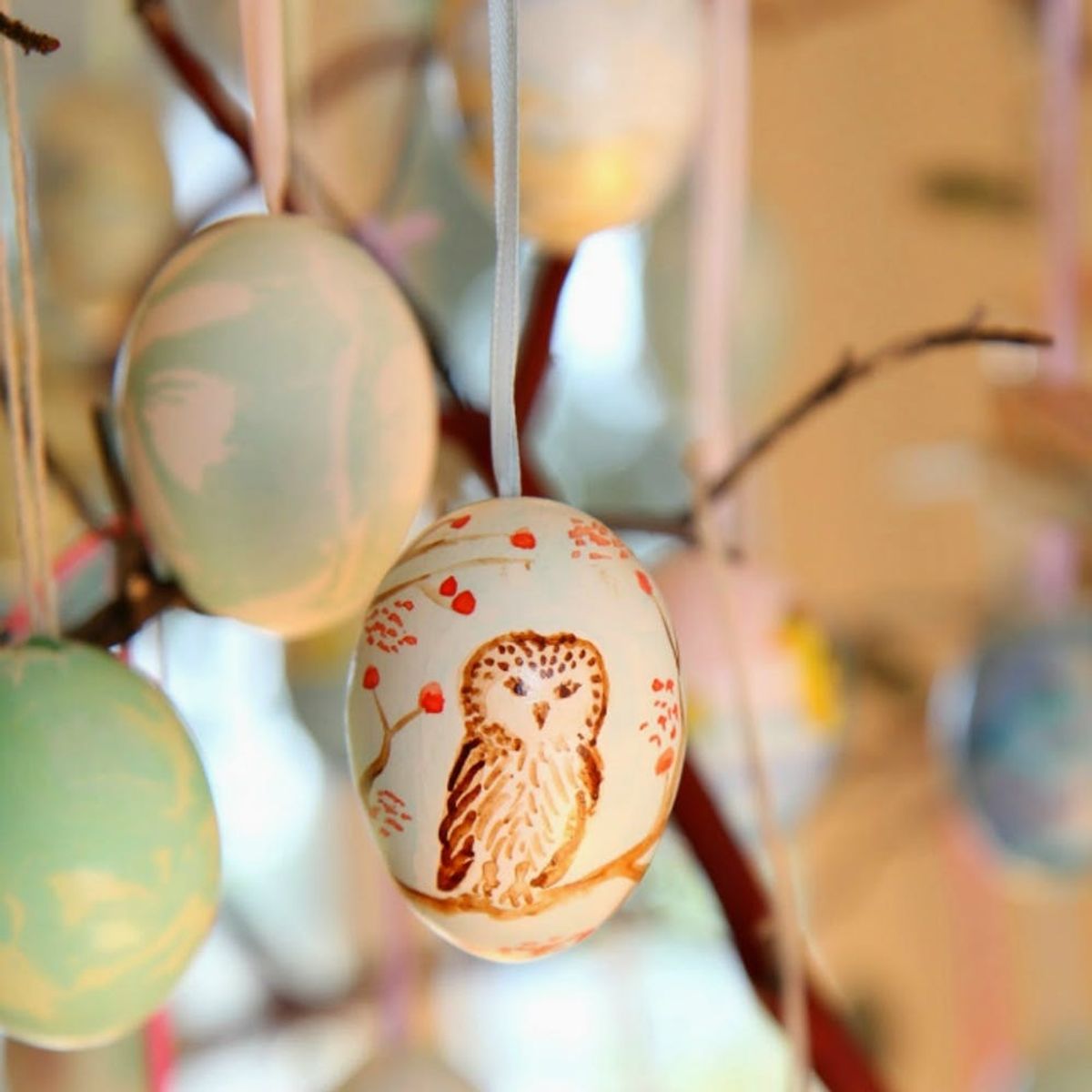Easter Egg Trees and Branches

The tradition of decorating a tree or spring branches with Easter eggs is a German custom that likely arrived in America with the first wave of German immigration in the 1700s. But the pagan festival of Easter, or Eostre, dates back much further. Legend holds that the goddess Eostre, a fertility goddess, magically changed her pet bird into a hare, which continued to nest and lay eggs. (There’s your egg and bunny imagery.) The Easter tree, in German Ostereierbaum, is traditionally decorated with Easter eggs that have been hollowed out, painted and affixed with string or ribbon for hanging.
Some folks like to decorate living trees and shrubs in their yard. Others cut a branch from a tree and bring it indoors to decorate. Cherry blossom and forsythia branches look very festive this time of year. Over at Nora’s Nest, Nora and her family have been decorating Easter trees for years. The eggs they make are keepsakes. They continue to bring them out year after year, adding one or two new ones each year. Using various techniques including painting, marbling, dying, and gold-leaf, Nora tends to favor animal motifs such as owls, butterflies, bunnies, ducklings, chicks and birds.
She hollows out the eggs, paints the eggshells with watercolors, then seals the paint with a clear varnish. After the eggs are dry, she makes a toggle from a short piece of wire, inserts it into the egg, threads a thin silk ribbon through the wire, then hangs the eggs on the tree branches. Nora likes to display her egg tree in the foyer of her home, in front of an antique mirror that reflects all of the beautiful colors of spring.
If you are interested in learning how to hollow out eggs, and other Easter egg tricks, check out our Easter Egg Basics.
Do you have an Easter tree or other festive decoration to share? Tag us on Instagram @britandco.
(Photos via Nora’s Nest)



















